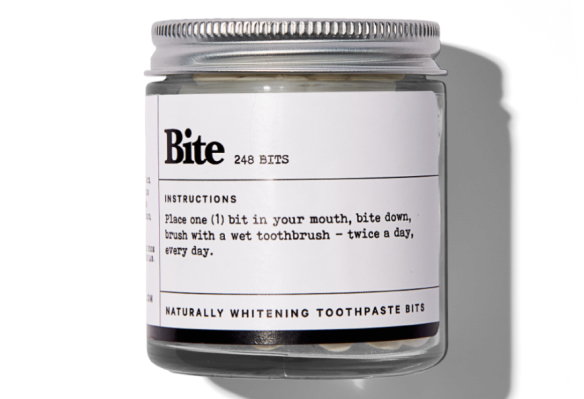By Steve Schaefer

Since I was a child, I’ve brushed my teeth dutifully with Crest, UltraBrite, Colgate, or some other commercial toothpaste in a tube. When the tube was empty, we just threw it out–and still did, until I heard about Bite toothpaste bits.
For the last few months, twice a day, morning and night, instead of squeezing a plastic tube, I’ve reached into a reusable glass jar and pulled out a little minty pellet. After a few gentle chews, it becomes foamy toothpaste. After my normal dental hygiene ritual, it leaves a fresh feeling with no chemical aftertaste.
The point of this exercise is to eliminate the plastic tube. We are creating a vast sea of plastic with all the packaging we use now, and this is one small way of making a difference. The old-school glass jar comes with your first order, and you simply refill it when it gets nearly empty.
The new bits come in what looks like a little plastic bag, but it’s made from vegetable cellulose, which can go right into your little green bin or back yard for composting.

The packaging for the bag is a reusable, recyclable little box. Bite sends only by slow delivery, so the little package is part of your normal mail delivery, and doesn’t require a separate gas or diesel delivery truck. They have thought this through.

The mouthfeel is a little less foamy than normal toothpaste, but you get used to it. I was initially concerned that it might not clean as well, but it seems to do just as effective a job as the regular brands.
If you look at cost, the little things are a little more expensive than Colgate, but it’s one of the sacrifices we make to clean up the planet, like driving electric cars before they are as convenient or cheap as gas ones. I expect costs will come down with volume, but for now, my mouth is happy and I’m glad to be part of this plastic-reducing effort.
For more information, visit their website.



